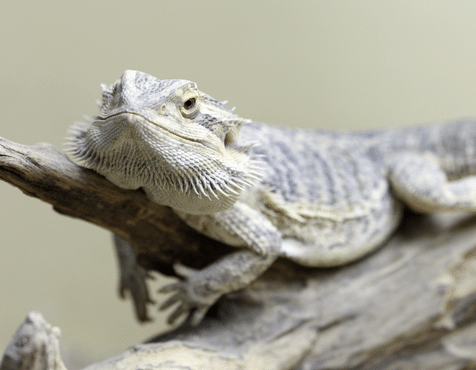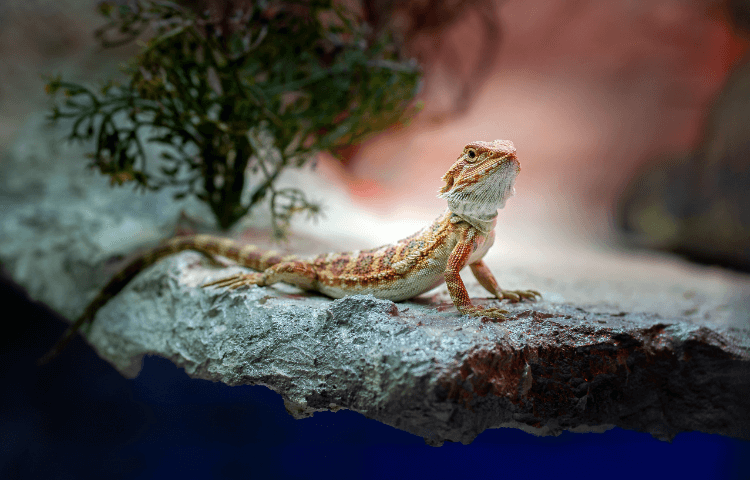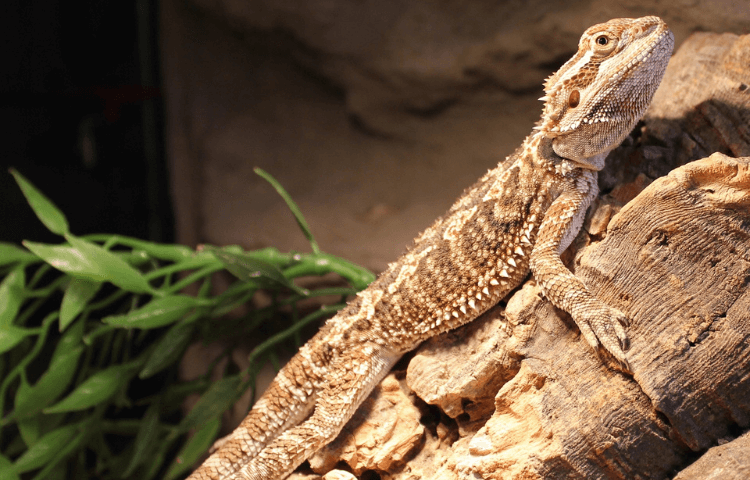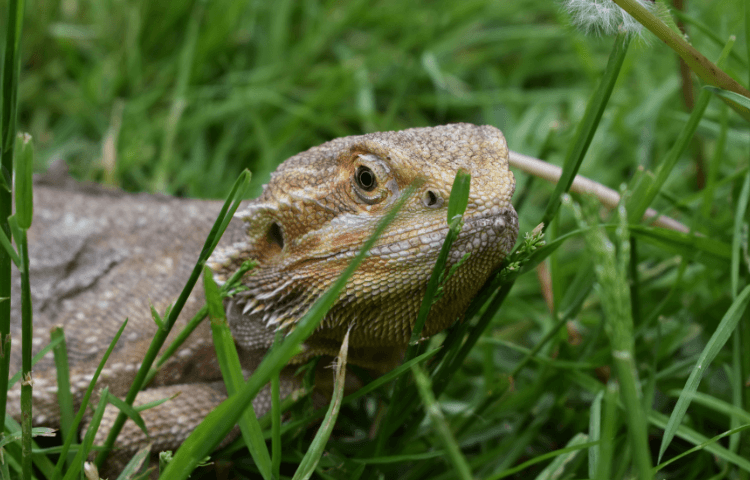Reptile expert Pete Hawkins shares his tips for managing your bearded dragon’s temperature during warmer months.
Getting your bearded dragon’s environment to the right temperature is crucial to keeping your beardie happy and healthy. If the vivarium gets too hot or too cold, health problems can arise.
How to cool down your vivarium
How to reduce humidity levels
Overheating symptoms to watch for
Is it normal for Beardies to sleep all day?
Taking your Bearded Dragon outside
How to cool down your Bearded Dragon’s vivarium
Use a thermostat
The most important piece of equipment in any Bearded Dragon setup is a thermostat. A thermostat dims the bulb when the set temperature is reached, reduces the heat output automatically, and prevents overheating and potential death.
Types of thermostat
For overhead heat (no heat mats), use a high-range dimming thermostat. Pete recommends the Microclimate Evo or Evo Lite which is available at reptile specialists. Don’t worry if the bulb is off most of the day… this is normal. Your thermostat is doing its job to maintain a safe temperature. The bulb should still come on first thing in the morning (to help your dragon bask and energise) and early evening when it cools down.
If you have concerns about the costs of owning a Bearded Dragon, check out our top tips to save money as a Bearded Dragon owner.
With or without a thermostat
Without a thermostat the bulb stays on full power all day, your dragon has no escape from extreme heat, and this can kill your Bearded Dragon.
With a thermostat the bulb dims or turns off when 40°C is reached, your vivarium cools down safely, and your dragon stays healthy.
Substrate for digging & cooling
Pete recommends a substrate mix of 40% play sand and 60% topsoil to encourage natural cooling behaviour. Bearded dragons instinctively dig for comfort, to cool down in midday heat, and to burrow for sleep.
Increase airflow & ventilation
- Open the vivarium glass doors slightly and secure mesh for safety
- Add extra vents to the rear or sides (only if secure)
- Install small fans at vent points to blow fresh air in and suck warm air out
- Room fans also help cool the overall environment
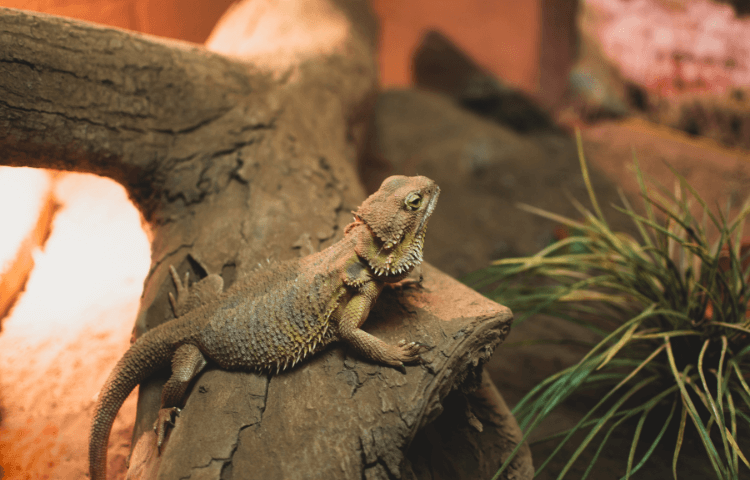
How to reduce the humidity level in your Bearded Dragon’s vivarium
Ideal humidity is around 30–40% and naturally rises at night. Humidity only becomes a problem when airflow is poor, which can lead to respiratory infections and bacteria build-up. Pete says to remember “Humidity will only ever be as low as it is in your home. Tackle the cause, not just the setup.”
To reduce humidity:
- Focus on ventilation
- Use fans to improve airflow
- Don’t panic if humidity spikes at night
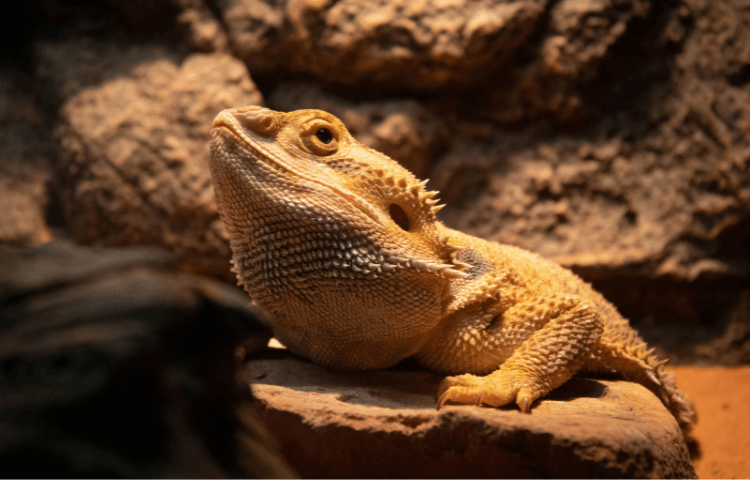
Overheating symptoms in Bearded Dragons
In hot conditions, be aware of signs like lethargy and loss of appetite. If your dragon isn’t eating or is acting strangely visit an exotic vet to monitor their health and watch for shelter-seeking behaviour (hiding, staying in the cool end).
Basking should continue (in short bursts) and dragons should bask after lights on, then move around and return for short basking periods throughout the day. Extended basking often signals poor setup conditions. If they’re basking all day, check the heat gradient and UVB quality.
You can offer hydration through:
- Misting
- Water bowls
- Moist hides
- Baths (only if your dragon drinks the water)
Is it normal for Bearded Dragons to sleep all day?
No, this is not normal and may indicate heat issues, poor UVB lighting, or illness. Brumation is rare in pets and often confused with illness. Signs like lethargy or loss of appetite could indicate parasites, MBD, or Atadenovirus.
If behaviour changes suddenly, consult your vet. Always get any unusual symptoms checked professionally.
Taking your Bearded Dragons outside
Outdoor time is great for natural UVB exposure as long as it’s done safely. You can read out blog about introducing a new Bearded Dragon to your home for more information. Here are a few tips for outdoor time:
- Start slowly with 5–10 mins a day for the first week
- Use a playpen (canvas or mesh types are best)
- Always provide a water bowl
- Always provide shade and shelter
- Avoid harnesses as these can cause injury or even death
How long can they stay outside?
Once acclimatised 30 minutes to 1 hour is more than enough time outside. If your dragon seems overwhelmed, take them back inside.
Watch for stress signs like:
- Black beard
- Running
- Hiding
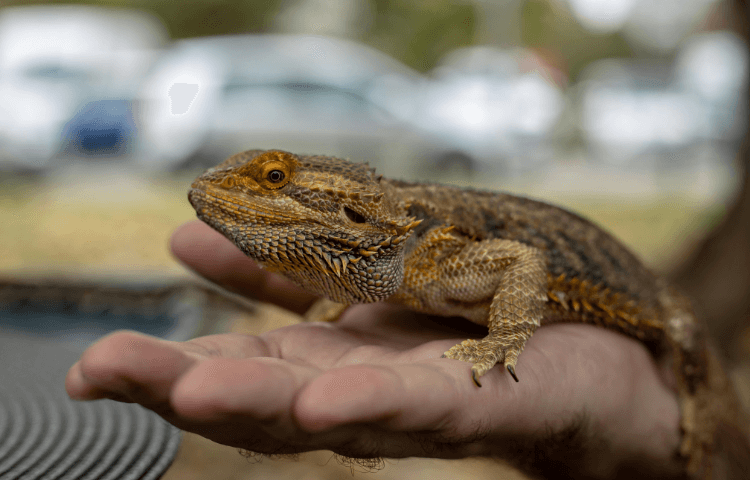
Is your Bearded Dragon insured?
Protect your Bearded Dragon with an exotic pet insurance policy and give your beardie the care they deserve. You can get a no-obligation quote on our website today. Simply get a quote for your lizard to get started.

